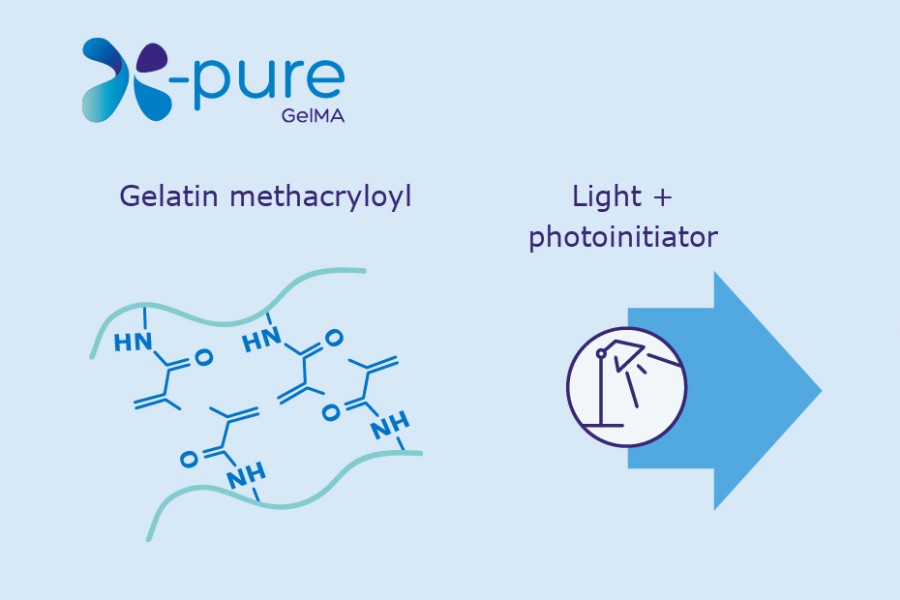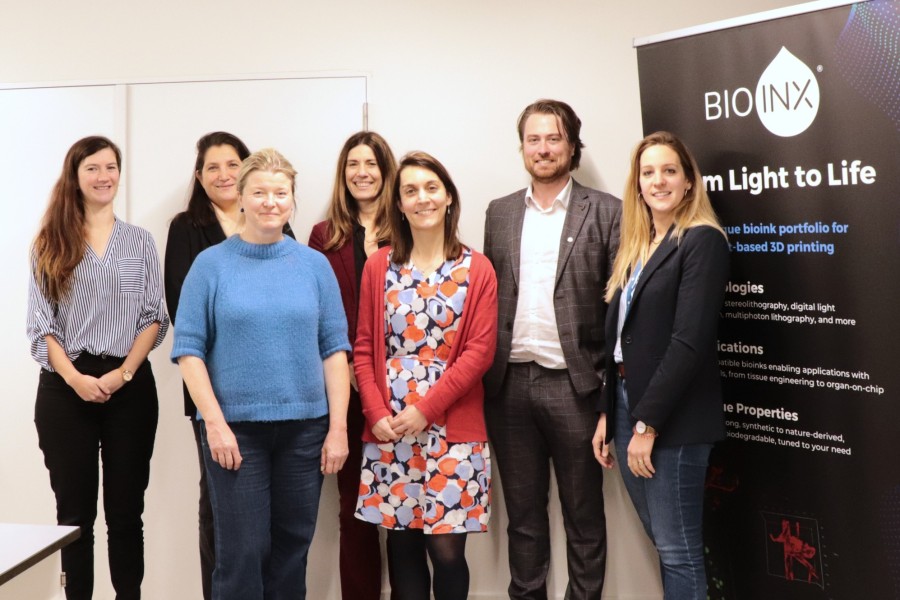BIO INX and Rousselot, which create 3D bioprinting materials and gelatin products, respectively, have teamed up to advance the production of 3D printed tissues. The duo will share their knowledge and resources to create better bioinks from gelatin, which could help in medical research and treatments.
As part of this collaboration, BIO INX will sell Rousselot’s proprietary X-Pure gelatin biomaterials for online purchase in Canada, Europe, South Korea, and the United States. A Darling Ingredients health brand, Rousselot’s X-Pure line of high-grade, customizable gelatins are tailored for research and applications within the body, meeting the rigorous standards required for medical devices and products. Boasting endotoxin levels are significantly lower than those found in traditional gelatins, so X-Pure biomaterials are ideal for sensitive biomedical applications where minimizing immune reactions is crucial.
Institutions like Harvard Medical School‘s Shin laboratory use X-Pure as a bioink to develop complex 3D tissues that closely mimic natural organ systems. Similarly, the Enlight Multidisciplinary European Consortium has employed X-Pure gelatins as bioinks to create a 3D living model of pancreatic tissue. Additionally, the University of Twente in the Netherlands has used X-Pure in organ-on-a-chip technologies, demonstrating its utility in creating detailed and functional 3D constructs.
The partnership has also created a new product: the X-Pure version of BIO INX’s renowned extrusion bioink, GEL-MA INX (short for Gelatin Methacrylamide INX). Produced in collaboration with Rousselot, this bioink is the first step towards a GMP (Good Manufacturing Practice)-like gelatin-based bioink that enables printing constructs in the presence of living cells with unprecedented ease and reliability. Sold for €125 ($136) on BIO INX’s site, GEL-MA INX is a very versatile bioink due to its strong resemblance to the natural extracellular matrix and cell interactive behavior. The product is described as capable of compatibility for a whole range of tissues, including blood vessels, adipose, brain, cartilage, bone, connective, skin and ocular tissue. Moreover, BIO INX’s resins have been used repeatedly and successfully with bioprinters from Regemat3D, FelixBio, and Cellink.
This development is in line with BIO INX’s mission to make bioprinting turnkey. It represents a significant stride towards bringing bioprinting closer to the clinic by enhancing reproducibility and standardization while adhering to elevated quality requirements. This is a step forward in making 3D bioprinting more practical for medical use.
BIO INX has its roots in the Polymer Chemistry and Biomaterials Group at Ghent University in Belgium. There, the GEL-MA technology was first developed and patented 25 years ago using Rousselot gelatin under the supervision of Biomaterials Professor Etienne Schacht.
The research group is currently co-led by Professor Sandra Van Vlierberghe, one of the co-founders of BIO INX, who claims that “Ever since the original publication on GEL-MA in 2000, the material has grown in popularity, becoming one of the reference materials in tissue engineering and 3D bioprinting research worldwide. Now, this collaboration with Rousselot also adds reproducibility to the mix. The added standardization and quality were the missing link to bring this material from academic research to real-life applications.”
Similarly, BIO INX CEO Jasper Van Hoorick indicated that this collaboration represents the culmination of years of shared vision and innovation between BIO INX and Rousselot to increase standardization and quality in biomaterials for tissue engineering and 3D bioprinting.
“By integrating Rousselot’s X-Pure gelatin biomaterials into our portfolio and introducing a GMP-like bioink, we are not only advancing the capabilities of 3D bioprinting but also building further on our roots and the groundbreaking work of the research group at Ghent University prior to incorporation,” pointed out Van Hoorick.
Furthermore, this collaboration significantly boosts Belgium’s Stad Gent region’s expertise in gelatin and gelatin-based products. The synergy of BIO INX, a leader in biomaterials for high-resolution 3D bioprinting, and Rousselot, a global leader in gelatin products, is ideal for improving the region’s longstanding legacy of excellence in gelatin expertise.
Rousselot’s Biomedical Global Director, Tanja Vervust, mentioned that the collaboration makes it simpler for customers to get high-quality gelatins, essential for tissue engineering and creating biological materials. The online availability of these gelatins is expected to help researchers and companies get the materials they need more efficiently, help reduce development variability, and facilitate the transition to clinical applications.
Five X-Pure products are already on the BIO INX online marketplace, such as the X-Pure GelDAT, which is designed for medical use inside the body and can speed up moving medical and pharmaceutical developments from the laboratory to patient care. Also, the research-grade X-Pure 10HGP 6500, a non-gelling pig skin gelatin ideal for vaccines and injectables, or the highly purified pig skin gelatin X-PURE 10P HBHV for research-grade medical applications like hemostatics and vaccines.
Overall, this collaboration between BIO INX and Rousselot is a step towards making better materials for 3D bioprinting. By combining their expertise, the duo aims to improve the quality and accessibility of biomaterials used in this field, making it easier for researchers to create and use 3D printed tissues and eventually organs.
Subscribe to Our Email Newsletter
Stay up-to-date on all the latest news from the 3D printing industry and receive information and offers from third party vendors.
Print Services
Upload your 3D Models and get them printed quickly and efficiently.
You May Also Like
The Dental Additive Manufacturing Market Could Nearly Double by 2033, According to AM Research
According to an AM Research report from 2024, the medical device industry, specifically in dentistry, prosthetics, and audiology, is expected to see significant growth as these segments continue to benefit from...
Heating Up: 3D Systems’ Scott Green Discusses 3D Printing’s Potential in the Data Center Industry
The relentless rise of NVIDIA, the steadily increasing pledges of major private and public investments in national infrastructure projects around the world, and the general cultural obsession with AI have...
AM Research Webinar Explores Continuum’s Sustainable Metal Additive Manufacturing Powders
Metal additive manufacturing (AM) powder supplier Continuum Powders is working to develop solutions that empower industries to reduce waste and optimize their resources. An independent life cycle assessment (LCA) of...
3D Printed Footwear Startup Koobz Lands $7.2M in Seed Round
California-based Koobz is focused on reshoring the U.S. footwear supply chain with advanced manufacturing processes, including 3D printing. The startup just announced that it has added $6 million to its...



































